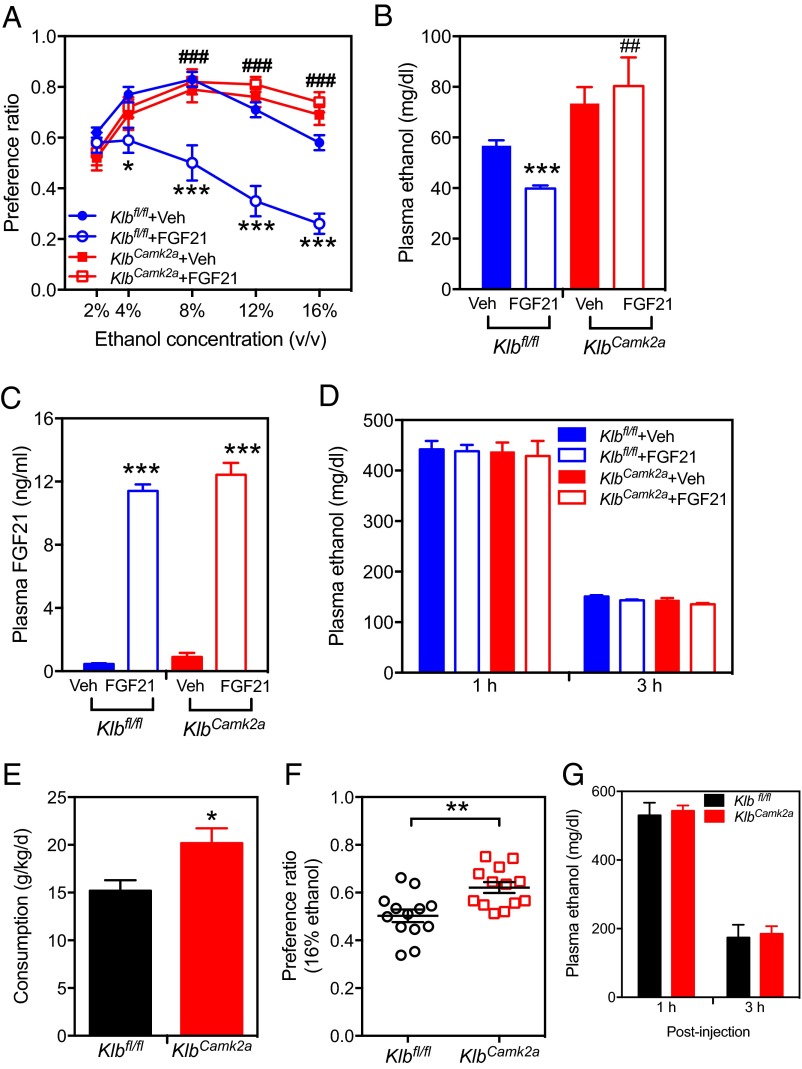Fig. 2.
FGF21 reduces alcohol preference in mice by acting on β-Klotho in brain. (A) Alcohol preference ratios determined by two-bottle preference assays with water and the indicated ethanol concentrations for control (Klbfl/fl) and brain-specific KlbCamk2a mice administered either FGF21 (0.7 mg/kg per day) or vehicle (n = 10 per group). (B) Plasma ethanol and (C) FGF21 concentrations at the end of the 16% (vol/vol) ethanol step of the two-bottle assay. For A–C, ***P < 0.001 for Klbfl/fl + vehicle vs. Klbfl/fl + FGF21 groups; ##P < 0.01 for Klbfl/fl + FGF21 vs. KlbCamk2a + FGF21 groups as determined by one-way ANOVA followed by Tukey's posttests; ###P < 0.001 for Klbfl/fl + FGF21 vs. KlbCamk2a + FGF21 groups as determined by one-way ANOVA followed by Tukey's posttests. (D) Plasma ethanol concentrations 1 and 3 h after i.p. injection of 2 g/kg alcohol (n = 4 per each group). (E) Consumption of 16% (vol/vol) ethanol (grams per kilogram per day) and (F) alcohol preference ratios in two-bottle preferences assays performed with control (Klbfl/fl) and brain-specific KlbCamk2a mice. Alcohol preference was measured by volume of ethanol/total volume of fluid consumed (n = 13 per group). (G) Plasma ethanol concentrations 1 and 3 h after i.p. injection of 2 g/kg alcohol (n = 5 per group). Values are means ± SEM. For E and F, *P < 0.05; **P < 0.01.

